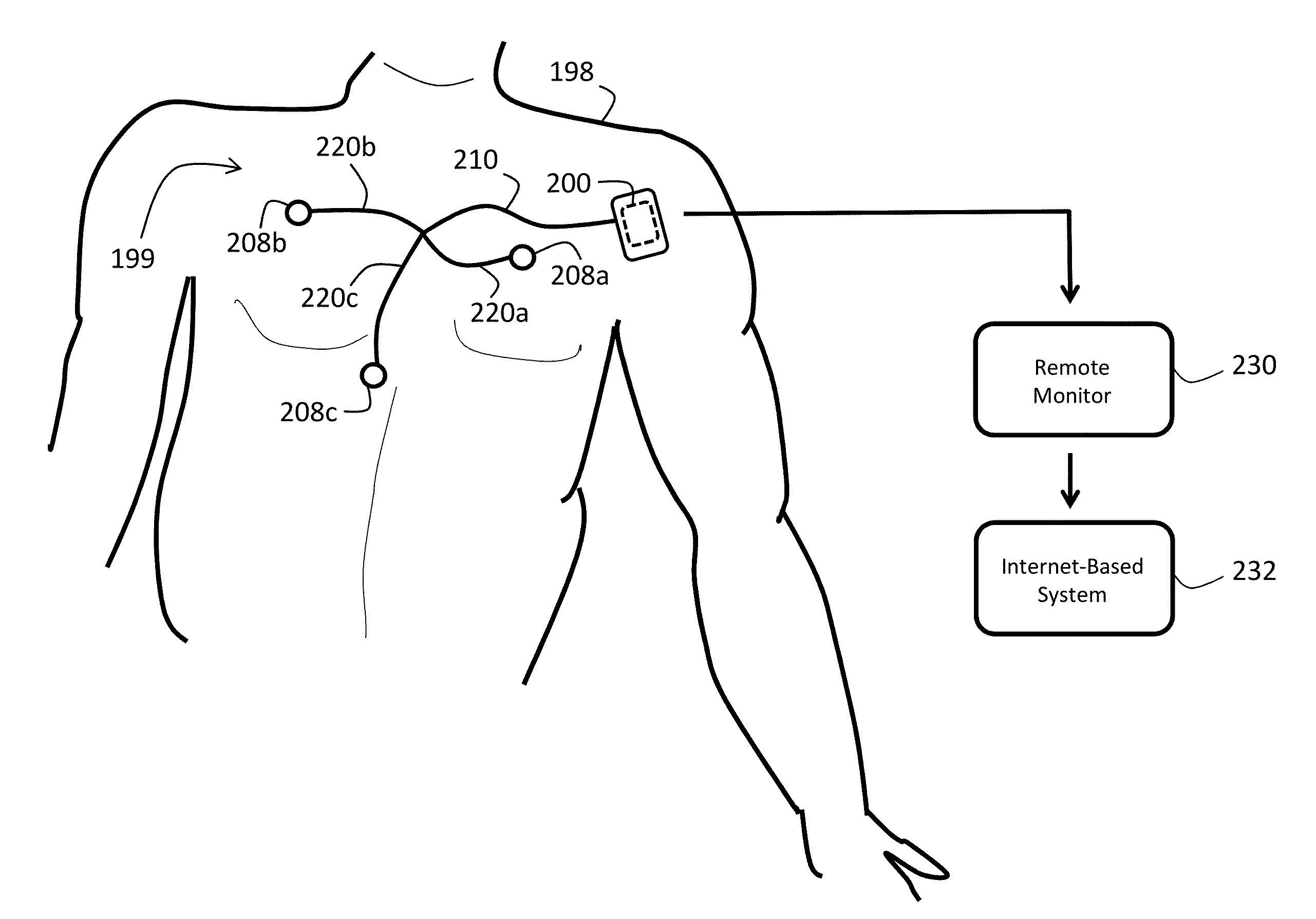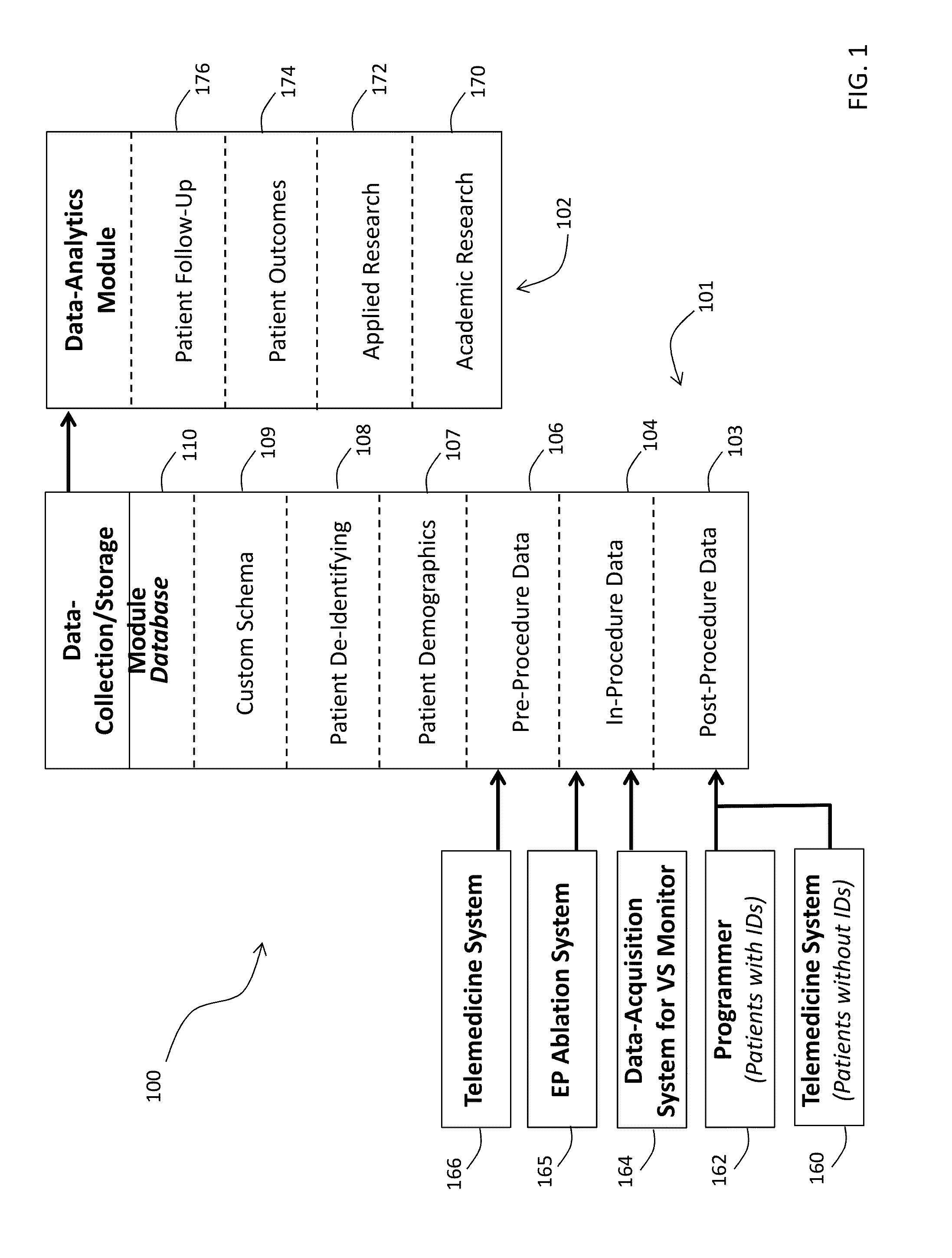Internet-based system for evaluating ECG waveforms to determine the presence of p-mitrale and p-pulmonale
a waveform and waveform technology, applied in the field of cardiovascular procedures, can solve the problems that the state-of-the-art emrs are only able to collect and store limited amounts of data from these systems, and achieve the effect of facilitating sophisticated inter-site clinical studies
- Summary
- Abstract
- Description
- Claims
- Application Information
AI Technical Summary
Benefits of technology
Problems solved by technology
Method used
Image
Examples
Embodiment Construction
[0048]The invention provides an Internet-based system that features data-collection / storage and data-analytics modules that, collectively, allow effective analysis of large data sets to improve cardiovascular medicine. During use, the data-collection / storage module collects cardiovascular and other patient and device-related data before, during, and after an EP or ID procedure, and then stores data from large groups of patients in a relational database. It interfaces with a data-analytics module that accesses and processes data from the database with a collection of algorithms to yield distilled information, which a website then renders for clinicians and other users. In general, the data collection / storage module integrates with the data-analytics module to process data and further distill it to provide useful information to a user. These systems operate in concert to perform a range of numerical analyses, from simple statistical analyses to complex, multi-parameter numerical studi...
PUM
 Login to View More
Login to View More Abstract
Description
Claims
Application Information
 Login to View More
Login to View More - R&D
- Intellectual Property
- Life Sciences
- Materials
- Tech Scout
- Unparalleled Data Quality
- Higher Quality Content
- 60% Fewer Hallucinations
Browse by: Latest US Patents, China's latest patents, Technical Efficacy Thesaurus, Application Domain, Technology Topic, Popular Technical Reports.
© 2025 PatSnap. All rights reserved.Legal|Privacy policy|Modern Slavery Act Transparency Statement|Sitemap|About US| Contact US: help@patsnap.com



